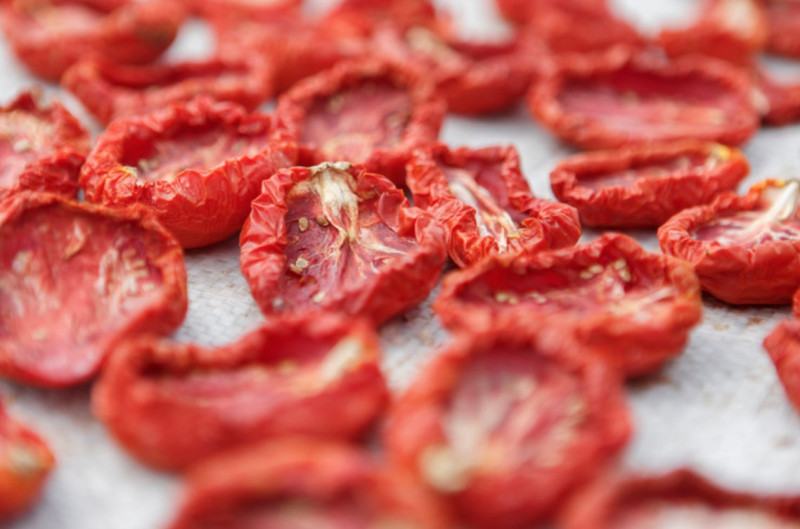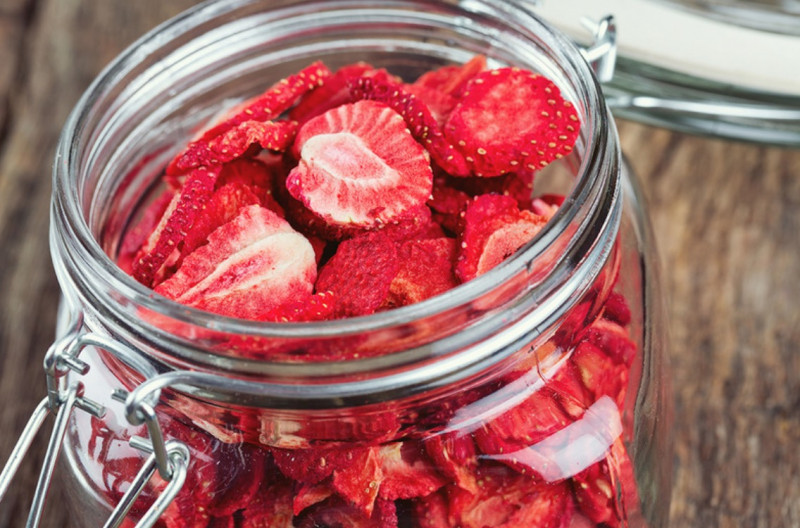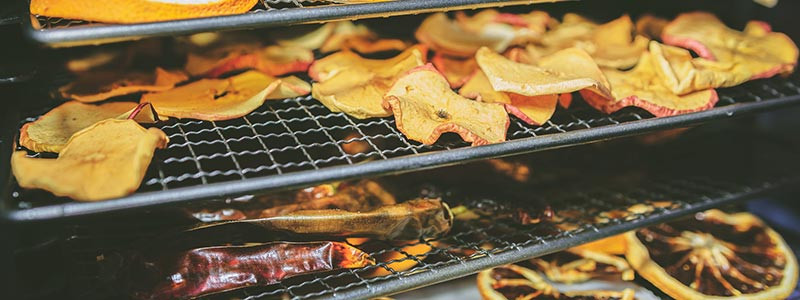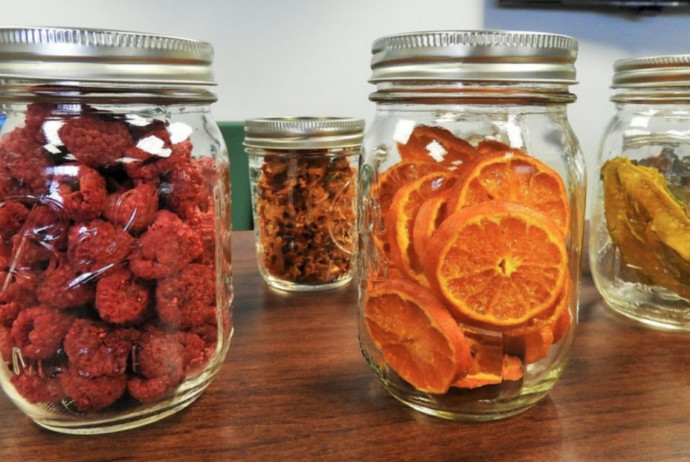This natural form of preservation concentrates and enhances the flavor of fruit, vegetables and herbs. With a return to local and homegrown produce, drying food lets you enjoyed it well beyond its peak season. When drying food, warm air is used to remove the water and harmful bacteria that cause spoilage. Removing the water also concentrates the flavor and aroma of fruit and vegetables. Check dried fruit and vegetables regularly for signs of mold, as the skin still contains a fair amount of water—unless they were dried at high temperature, which unfortunately sacrifices taste. After drying, small plums are usually little more than skin and pit that are hard to separate. You are better off choosing larger plum varieties, and halving and pitting the fruit so it dries faster.

What can be dried?
Dry only high-quality, fresh, ripe produce, preferably organic. Harvest produce for drying only on dry, sunny days. Wet produce decays quickly and takes extra time and effort to dry. Pick herbs in the late morning or early afternoon, when their water content is lowest. Fruit that has fallen to the ground is not suitable for drying. Fruit with pits or seeds are easy to dry, though you may wish to peel fruits such as pears and apples. Avoid the tedious job of picking one berry at a time by drying the entire cluster; the berries will then fall off by themselves. Whatever variety you choose, make sure the berries are at the peak of their ripeness or the dried fruit won’t have any taste. The aroma of herbs changes when they are air dried. Many, like dill, chervil, tarragon, basil and cilantro, lose their scent altogether.
Preparing goods for drying
Items should be of comparable size and thickness so that they dry at an even rate.
Place fruit such as apples and pears in lemon water—1 teaspoon (5 ml) lemon juice in 2 cups (500 ml) water—after cutting to preserve their color. Alternatively, dissolve 1 cup (225 g) superfine sugar in the same amount of water to make a sugar bath. Bring the mixture to the boil and let it cool before immersing the fruit briefly. Always lay produce for drying in a single layer with the cut side facing up. Pit apricots and peaches before drying. Blanch peas and beans in advance to retain their color and aroma, and onion rings for 30 seconds. You can also blanch other vegetables before drying. String apple slices, mushrooms and chile peppers on cotton threads; hang to dry in a warm place. Dry the plucked leaves of herbs or hang the stems in bunches and pick the leaves off after drying.Air dryingDry in the fresh air or indoors during warm, dry months. Arrange the produce to be dried on trays or, even better, on gauze stretched over a wooden frame and covered with muslin. Allow air to circulate freely around the produce during the drying process. Drying takes 2–3 days outdoors in hot sun or up to 2 weeks indoors. If no juice seeps from fruit when you break it into pieces, it is dry and ready to store in containers.
Accelerated drying in the oven
Place produce directly on the oven rack when oven-drying. Baking trays interfere with air circulation. Put small items on a piece of muslin stretched over a wire rack. Prop the oven door slightly ajar with a wooden spoon to allow the moisture to escape. Thread apple rings on bamboo canes cut to fit the width of the oven. Dry fruits and vegetables at a maximum temperature of 250°F (120°C). Because of their essential oils, herbs should be dried at the lowest oven setting. The lower the temperature at which produce is dried, the fewer vitamins are lost. Turn the produce once during the drying process. Return the rack in another direction, if possible, to allow for a more even heat distribution. Mushrooms are dry when they look wrinkled and feel leathery.





You can also use an electric food dehydrator for drying foods. I have had one for years and love it. Fruits and vegetables that didn't get eaten can be dried so that they aren't wasted and can be used in the future.